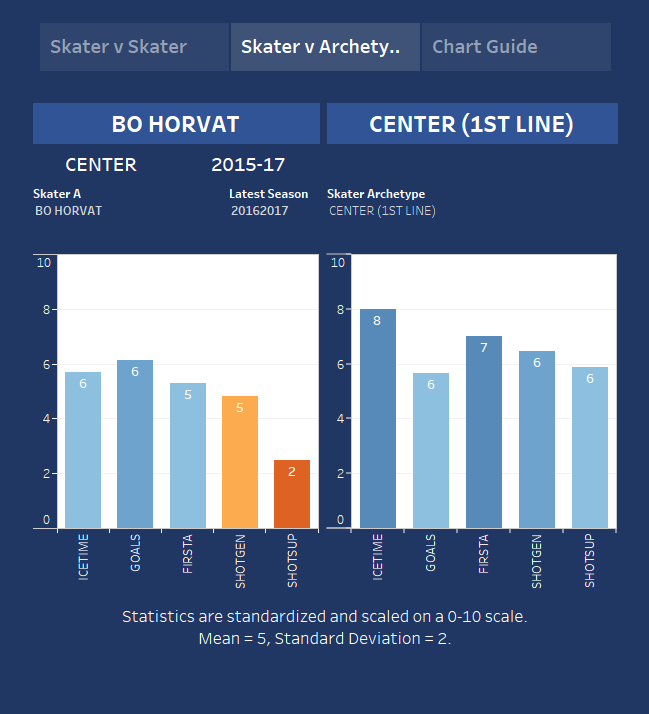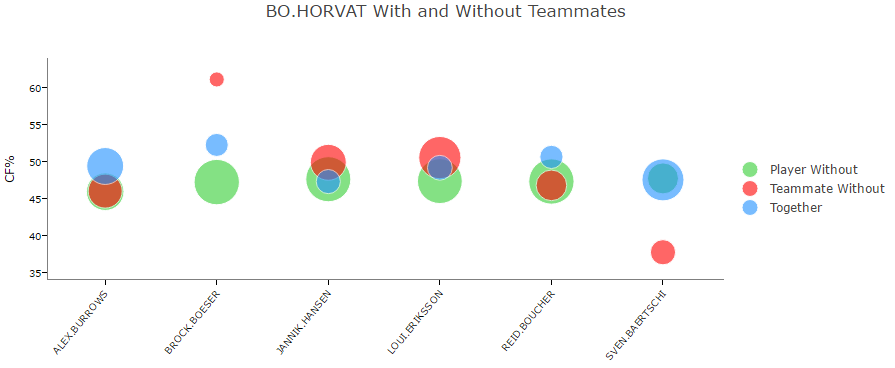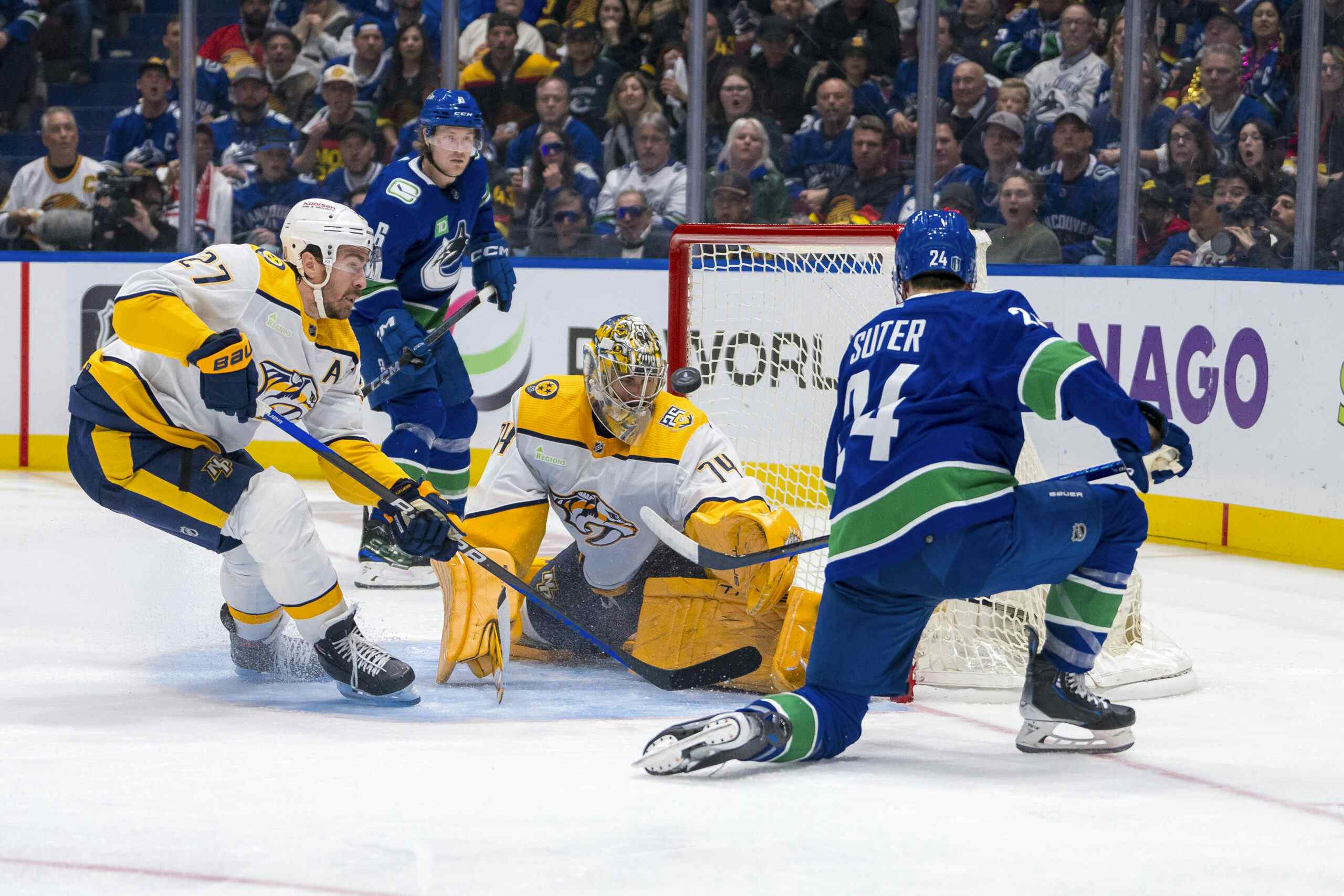Canucks Army Year In Review: Bo Horvat

6 years ago
When the Vancouver Canucks drafted Bo Horvat, many of the writers in this space questioned whether or not he would ever be more than a third-line centre. Four years later, those concerns seem pretty silly.
Not only did Horvat entrench himself in the Canucks’ top six last season — he was their best player period. That’s not a terribly high bar to clear, but it’s impressive nonetheless. Horvat finished the season with a team-leading 52 points, making him the first player in ten years not named “Sedin” to do so.
Horvat’s 2016-17 season saw him become the team’s premier offensive weapon, forming an effective duo with winger Sven Baertschi. 52 points is fringe first-line production, but Horvat still has a long road ahead of him to become a legitimate first-line centre, if he becomes one at all.

Because of how it’s weighted, Horvat’s HERO chart actually undersold his production last season. (His p/60 rate of 1.79 was in line with a low-end first-line centre.) Offensively, Horvat’s exceeded all expectations and has for all intents and purposes developed into a high-end player for the Canucks. Where he’s lagging behind, and has for quite some time now, is the defensive side of the game, or to put it more succinctly, his ability to prevent shots against.
I have no doubt that the elements of Horvat’s game that made him a defensive ace in junior are still a part of his game today. He’s positionally sound and possesses the requisite puck skills to transition the play out of harm’s way. And yet, his shot suppression numbers paint a picture of one of most permissive forwards on an already poor defensive team.

My speculation is that Horvat’s reliance on rush-scoring his hurting his defensive solvency. In most cases, the solution would be to try to generate more zone time, but Horvat is a special case. Historically, shots off the rush have a much higher conversion rate than shots generated through zone time, and Horvat’s ability to skate the puck into high-percentage areas a big part of the reason his traditional boxcar stats have been better than you’d expect based on his performance by underlying shot-based metrics. A large part of the reason he’s able to maintain a shooting percentage above the league average consistently.
This presents the Canucks with a bit of a dilemma going forward. Horvat hasn’t really lived up to the two-way potential he showed in junior, but the reasons for his permissiveness go hand-in-hand with the reasons why he’s been such an effective producer of offence up until this point. Any adjustment might only serve to make him a less effective player overall.
At this point, I’d advise the Canucks to change the way they think of Horvat, especially when it comes to usage. Horvat looks as though he’s going to be far and away their best offensive player next season, and possibly the rare type of player that can truly drive shooting percentage as opposed to just shot generation. With that in mind, I’m not sure it makes sense for him to be taking on so much defensive responsibility. The Canucks are committed to Brandon Sutter, for better or worse, and he’s shown historically that he can at the very least shoulder this type of defensive load without being a complete liability. He’s also shown that he’s never going to be more than a middling offensive player, so it would seem that the path of least resistance would be to let Sutter handle more of the high-leverage defensive situations and the PK, and let Horvat work his magic offensively.
It’s really all guesswork though. We’ve all been wrong about Horvat so many times in the past that it seems like folly to try to divine what’s going to come next for him. For three straight years now, he’s been full of surprises.





